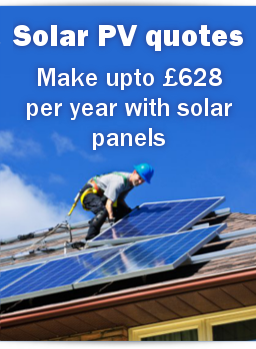You can manage your cookie preferences in the sections below. If you would like to know more, please view our privacy & cookie policy.
How to earn money from solar energy at home
Installing solar panels at your home or business premises can reduce your carbon footprint and earn you money. Not only do solar PV systems cut your energy bills, they can also actually bring in profit through the government's incentive schemes.
Energy bills
The most common solar PV installation in UK homes is a 3.5kWp system, capable of generating approximately 3,000kWh of electricity each year in optimal conditions. This amounts to around 75% of a typical household's electricity consumption, meaning that a solar system can make a home largely self-sufficient, dramatically reducing the energy bills incurred by homeowners in the process. Energy bill savings are a key part of any potential solar PV earnings, as they are guaranteed for the life of your system.
Generation Tariff
A large portion of potential solar panel earnings comes from the government's generation tariff, which is part of the Feed-In Tariff (FIT) scheme. Under the generation part of this scheme, you receive a fixed rate of income for each kWh of electricity you generate. The rate varies depending on the size of your system, the type of technology you use and the date of installation. Payment ranges between 7.1p/kWh for the largest systems and 16p/kWh for smaller ones.
If you were to install the most common type of system by 30th April 2013, you would receive 15.44p/kWh, provided that your home has at least a D rating on its Energy Performance Certificate (EPC) - you can find more information about this in our EPC guide. Generation rates are generally fixed for 20 years, but this may change for installations after the April deadline.
Feed-In Tariff
On top of the generation tariff, you also receive a fixed rate of 4.5p/kWh for any surplus electricity that you feed back into the National Grid. This rate is subject to change, but if you join the FIT scheme before April 2013 then it will be fixed for 20 years.
To maximise your solar panel earnings, it can be more efficient to try to use as much of the electricity that you generate during the day as possible – by running washing machines, tumble dryers and dishwashers during daylight hours, for example. This is because the price at which your surplus energy is sold back to the grid is much lower than the rate that you pay to your energy company for electricity.
Making a profit
It's important to remember that all the solar PV earnings you make must be offset against the cost of installing and maintaining your solar system. Installation cost ranges between £2,500 to £15,000, and maintenance may include roof strengthening, cleaning the panels and clearing overhanging branches.
Taking all this into account, it is likely to take between eight and eleven years before you go into profit, based on an initial outlay of £7,000 on a standard 3.5kWp system. Typical earnings of around £645 a year (through tariffs and savings), would give you a total income of £3,225 by year 5, £6,450 by year 10 and £12,900 by year 20. However, these earnings could grow if energy bills continue to rise, because the savings you make would increase considerably.


